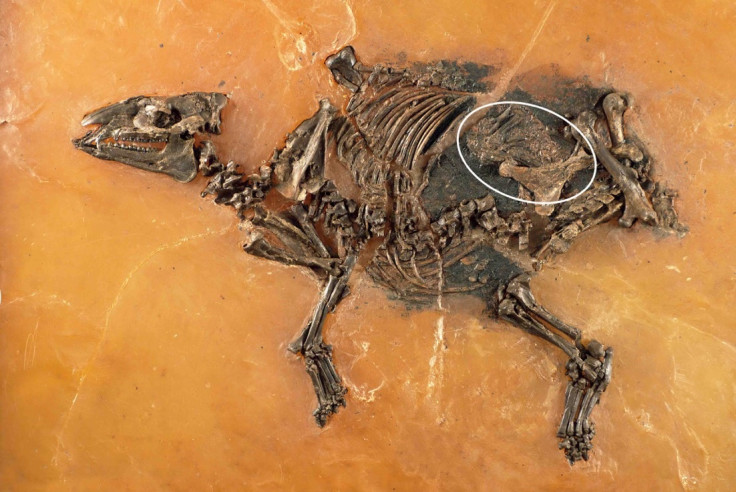Tiny Horse Fossil from 47 Million Years Ago Discovered with Preserved Foetus Still Inside

The fossil of a tiny horse dating to 47 million years ago has been discovered to have a foetus still inside it.
The ancient horse, Eurohippus messelensis, was discovered in Germany in the oil shales at Grube Messel – an area long known for its wealth of fossils.
Announced at the 2014 Annual Meeting of the Society of Vertebrate Paleontology in Berlin, researchers from the Senckenberg Research Institute said the horse had four toes on each forefoot and three on each hind foot. It was about the size of a small dog.
The horse fossil was first discovered almost 15 years ago but the presence of the foetus was only uncovered when scientists studied the specimen with a micro x-ray.
Analysis of the fossil revealed a structure that connects the uterus to the backbone, helping to support the developing foal. After the specimen was prepared, the remains of the outer uterine wall became visible.
Jens Lorenz Franzen, lead author of the study, said: "Almost all of the bones of the fetus are still articulated in their original position. Only the skull is crushed."
Researchers said the placenta in the specimen is just the second to be described in a fossilised placental mammal – a diverse group of mammals that includes humans, elephants, shrews and dolphins.
At the time when the horse lived, mammals were far smaller. Previous research has found that mammals shrank after global warming events – possibly a response to the availability of resources.
The Senckenberg scientists said the fossil shows that reproduction in early horses was very similar to that of their modern equivalent.
The size of the foetus, along with the presence of fully developed milk teeth, suggests the horse was close to term when it died.
However, the position in the uterus shows they did not die while giving birth – the foal was upside down and its front legs were not extended, as they would be before birth. The cause of death is unknown.
© Copyright IBTimes 2025. All rights reserved.






















